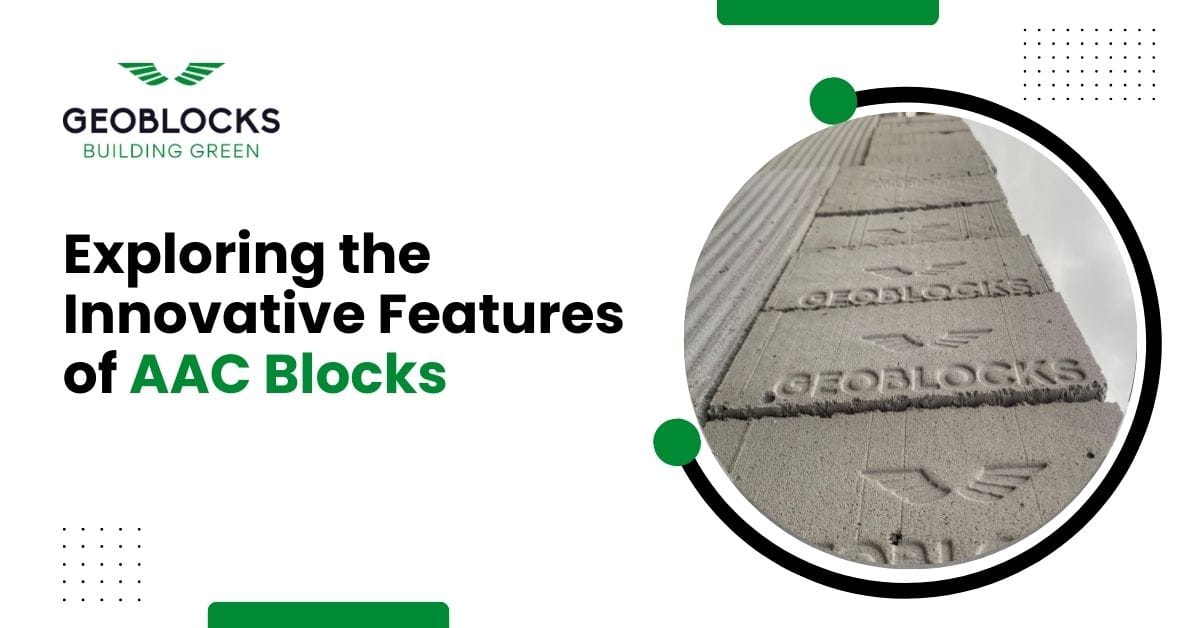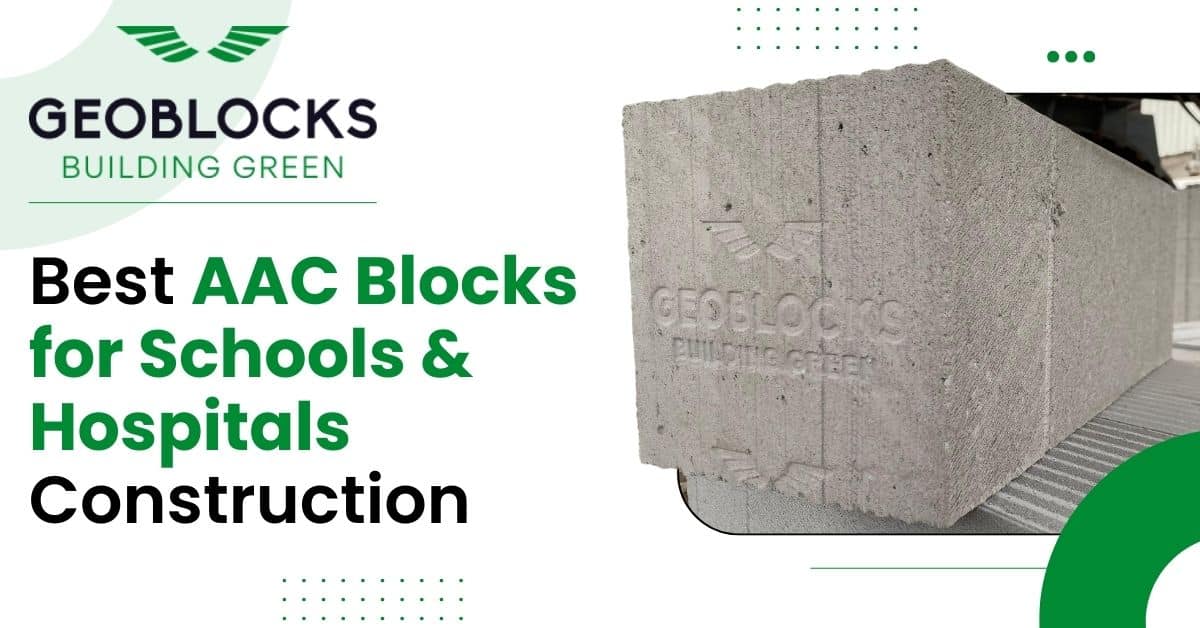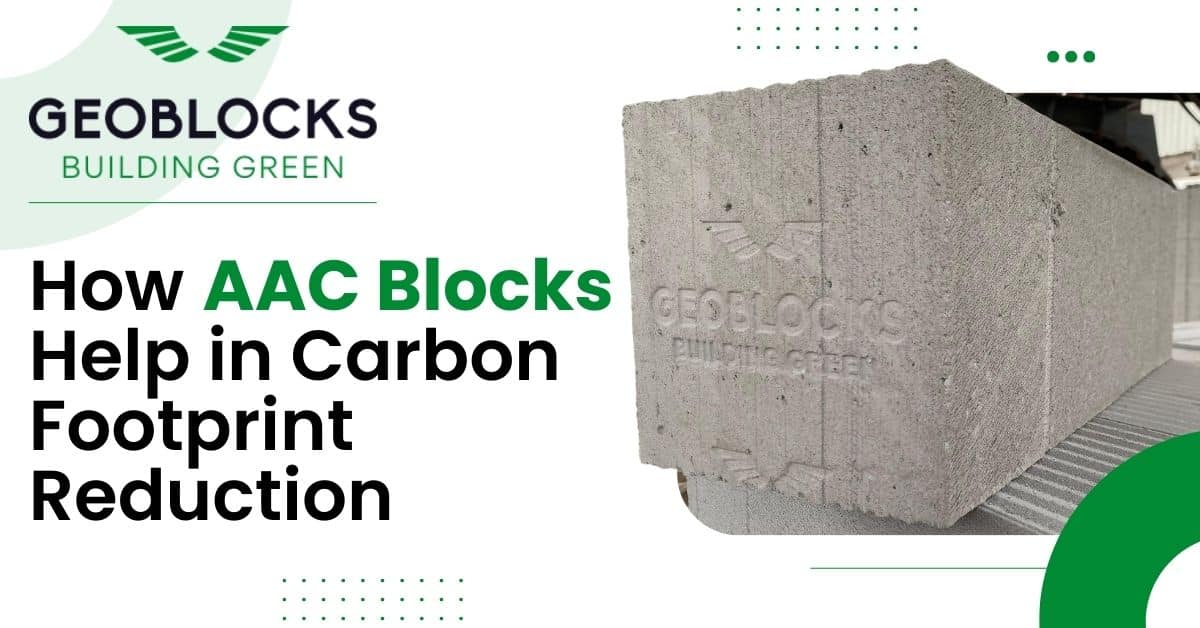When constructing schools and hospitals, choosing the right building materials is crucial for safety, durability,…

AAC blocks, or Autoclaved Aerated Concrete blocks, are transforming the construction landscape with their remarkable properties and wide-ranging applications. As a content writer at GEOBlocks, I’m thrilled to explore the innovative features of AAC blocks, showcasing their advantages, uses, and eco-friendly attributes.
What Are AAC Blocks?
AAC blocks are lightweight precast building materials composed of cement, lime, water, and an expanding agent. This combination creates a robust yet lightweight product that outperforms traditional concrete blocks in various aspects.
Key Advantages of AAC Blocks
- Lightweight: AAC blocks weigh about one-fifth as much as conventional concrete blocks, significantly reducing the structural load. This lightweight feature facilitates easier handling and quicker construction.
- Thermal Insulation: The porous structure of AAC blocks enables them to deliver outstanding thermal insulation. They help maintain comfortable indoor temperatures year-round, leading to reduced energy consumption for heating and cooling.
- Fire Resistance: AAC blocks are non-combustible and can endure high temperatures, significantly improving the fire safety of buildings.
Innovative Features of AAC Blocks
Sustainability
AAC blocks are an environmentally friendly choice, produced with minimal waste from natural raw materials. Their manufacturing process consumes less energy compared to traditional concrete, making them a sustainable option for modern construction. Furthermore, their thermal efficiency contributes to lower energy usage in buildings.
Versatile Applications
AAC blocks are highly versatile, and suitable for a variety of construction needs, including:
- Residential Buildings: Their lightweight and insulating properties make them ideal for homes.
- Commercial Structures: From offices to retail spaces, AAC blocks are perfect for diverse commercial projects.
- Infrastructure: Their strength and durability lend themselves well to use in bridges, tunnels, and more.
Easy Workability
One of the standout features of AAC blocks is their workability. They can be effortlessly cut and shaped with standard tools, accelerating the construction process and lowering labour costs. This ease of use makes AAC blocks a favorite among builders.
Economic Benefits of AAC Blocks
Using AAC blocks can lead to significant cost savings in several areas:
- Reduced Labor Costs: Their lightweight nature means fewer workers are needed for transport and installation.
- Lower Transport Costs: Because they are lighter, transporting AAC blocks to construction sites is more economical.
- Long-Term Savings: The energy efficiency of AAC blocks can lead to substantial savings on heating and cooling bills over time.
Frequently Asked Questions
What materials are used to make AAC blocks?
AAC blocks are made from a mixture of cement, lime, water, and an expanding agent, resulting in a lightweight and durable product.
Are AAC blocks eco-friendly?
Yes, AAC blocks are considered environmentally friendly due to their use of natural raw materials and lower carbon emissions during production.
Can AAC blocks be used for load-bearing walls?
Yes, AAC blocks are strong enough to be used in load-bearing walls, making them suitable for various structural applications.
How do AAC blocks compare in cost to traditional bricks?
Although AAC blocks may have a higher upfront cost, their lightweight properties and energy efficiency typically result in significant savings in construction and maintenance over time.
What fire resistance features do AAC blocks offer?
AAC blocks are non-combustible and can withstand high temperatures, providing excellent fire resistance, which is essential for building safety.
Conclusion
The innovative features of AAC blocks make them a superior choice for modern construction. Their lightweight nature, thermal insulation properties, fire resistance, and sustainability position them as an ideal building material. As the construction industry continues to evolve, AAC blocks will play a crucial role in creating eco-friendly and efficient structures.




